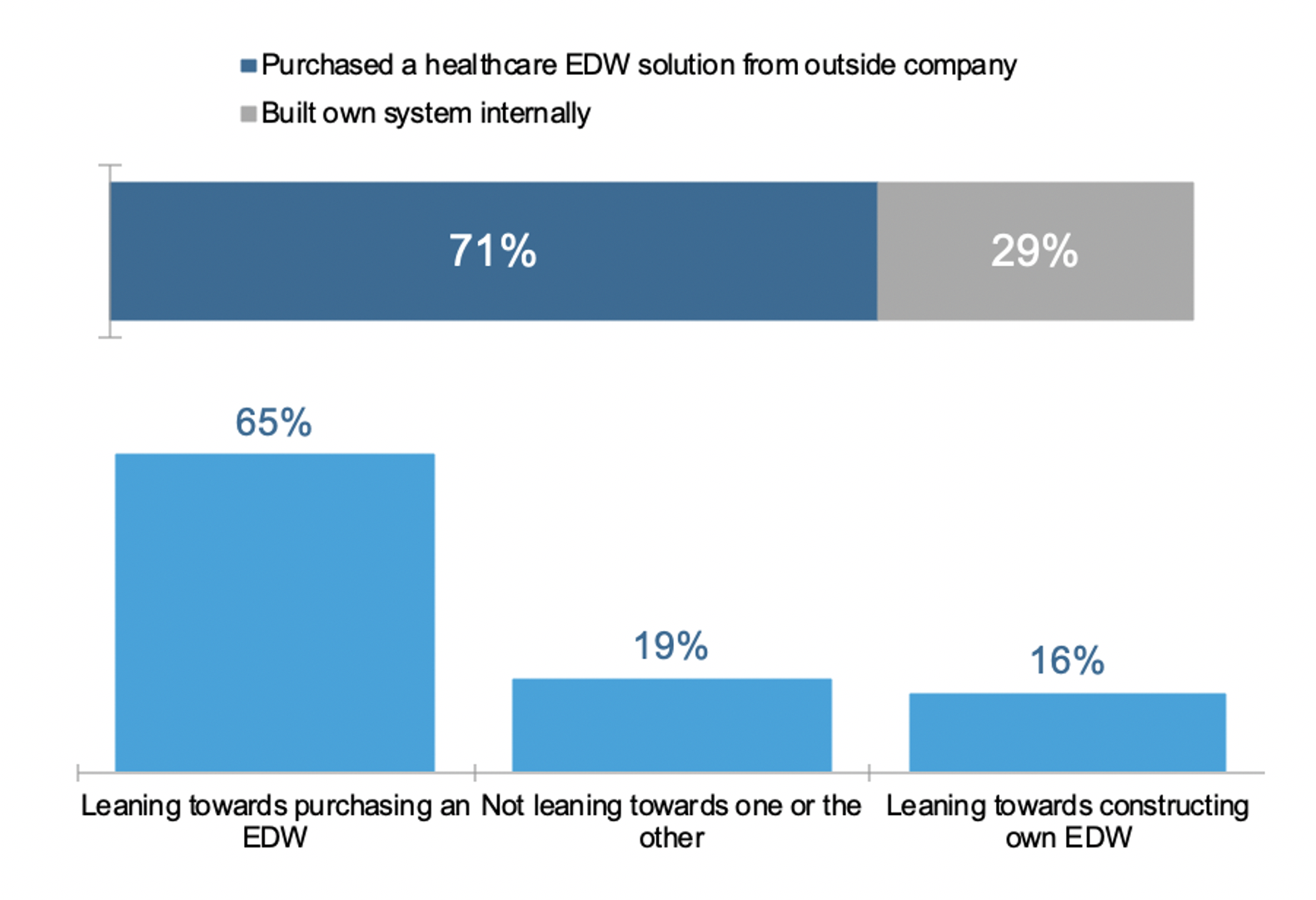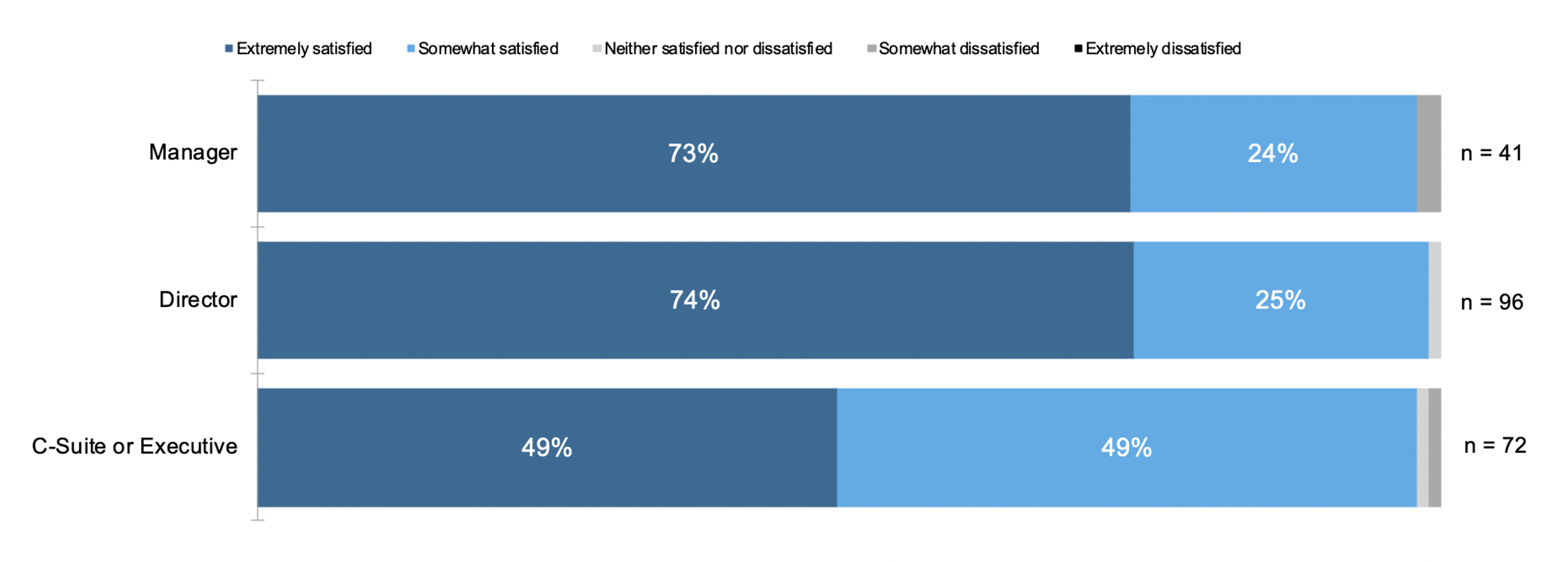Build Versus Buy a Healthcare Enterprise Data Warehouse: How IT Leaders Choose the Best Option for Their Organizations
As comprehensive data and analytics have become a healthcare imperative, health systems have progressed from debating whether to adopt an enterprise data warehouse (EDW) to whether to build a platform in-house or purchase one from an analytics vendor. Commercial solutions tend to offer more advanced capabilities and security as well as expert services but also require a significant ongoing financial investment.
Organizations that choose homegrown alternatives tend to do so for the lower cost. And as the public cloud has made IT infrastructure (e.g., Azure, Google, Amazon Web Services) increasingly accessible, some healthcare IT leaders have gained interest in homegrown solutions.
A spring 2020 Health Catalyst survey, however, suggests that health systems aren’t favoring proprietary platforms over vendor solutions. Of almost 400 healthcare and pharmaceutical industry respondents, 71 percent of organizations that use an EDW purchased their system from an outside company. A closer look at survey results indicates the while commercial solutions dominate, homegrown EDW users are generally satisfied with their systems, suggesting the industry may continue to divide itself between commercial and proprietary solutions.
More than 70 Percent of Health Systems Choose a Vendor-Built EDW
Even with growing access to IT infrastructure, health systems still favor commercial EDWs. Health Catalyst found that the vast majority (84 percent) of survey respondents worked at companies that currently have an EDW. Among those, 71 percent purchased their platform from an outside company. The trend towards commercial platforms will likely continue, as the 65 percent of organizations in the market for an EDW report leaning towards purchasing rather than building an EDW (Figure 1).

Trust, Price, Features Drive Purchasing Decisions
When purchasing an EDW, organizations look for the following qualities:
- A trusted brand (65 percent).
- A reasonable price (54 percent).
- Necessary features (54 percent).
Health systems commonly report choosing a commercial EDW due to the reputability, trustworthiness, quality, data security, and integration functionalities of vendor solutions. Those with homegrown EDWs say they kept their solutions in house because they have the necessary internal experience, a preference for building internally and preferred the lower entry price.
Build or Buy, Healthcare Users Tend to Like Their EDWs
Most healthcare EDW users tend to like their systems, whether they purchased or built them. Organizations that constructed their system reported a 76-percent satisfaction rate, and those who purchased an EDW reported 64-percent satisfaction.
While EDW service satisfaction is high across all revenue levels, organizations with revenue of less than $200 million per year reported the highest level of satisfaction at 73 percent. The next revenue group ($200 million to just under $300 million) had a satisfaction rate of 64 percent. Satisfaction appears to diminish slightly higher up the leadership ladder, with three-quarters of managers and directors satisfied and just under half of C-suite or executives satisfied (Figure 2).

Time Constraints and IT Support Are Common Challenges with Homegrown Systems
Despite a reported 76-percent satisfaction rate for healthcare users with homegrown EDWs, organizations encounter common roadblocks when they build their systems. These challenges include time constraints and lack of sufficient IT personnel, with respondents more often citing IT staff as a “large” challenge. And while barriers to homegrown solutions aren’t common, few organizations report no difficulties in the home-built process.
What the EDW Buy-Versus-Build Debate Means for Health Systems
While the majority of healthcare EDW users prefer commercial solutions, the high satisfaction rate among homegrown users suggests that the “build” camp has a dedicated following. Yet, health systems that opt for an in-house EDW report roadblock, particularly around IT personnel. Is there an opportunity for a middle-of-the-road solution in which an IT vendor offers professional services to support homegrown data solutions according to the health system’s needs? A flexible data infrastructure (such as one provided by the Health Catalyst® Data Operating System [DOS™]) can enable both homegrown analytics as well as out-of-the-box solutions. Such a middle ground might bridge the gap between buy-versus-build approaches, helping organizations that opt for homegrown solutions realize more of the data access and management capabilities of a more digitized healthcare system.
Additional Reading
Would you like to learn more about this topic? Here are some articles we suggest:
- The Homegrown Versus Commercial Digital Health Platform: Scalability and Other Reasons to Go with a Commercial Solution
- The Six Biggest Problems With Homegrown Healthcare Analytics Platforms
- The Healthcare Data Warehouse: Lessons from the First 20 Years
- Healthcare Analytics Platform: DOS Delivers the 7 Essential Components
- The Digitization of Healthcare: Why the Right Approach Matters and Five Steps to Get There
This website stores data such as cookies to enable essential site functionality, as well as marketing, personalization, and analytics. By remaining on this website you indicate your consent. For more information please visit our Privacy Policy.

